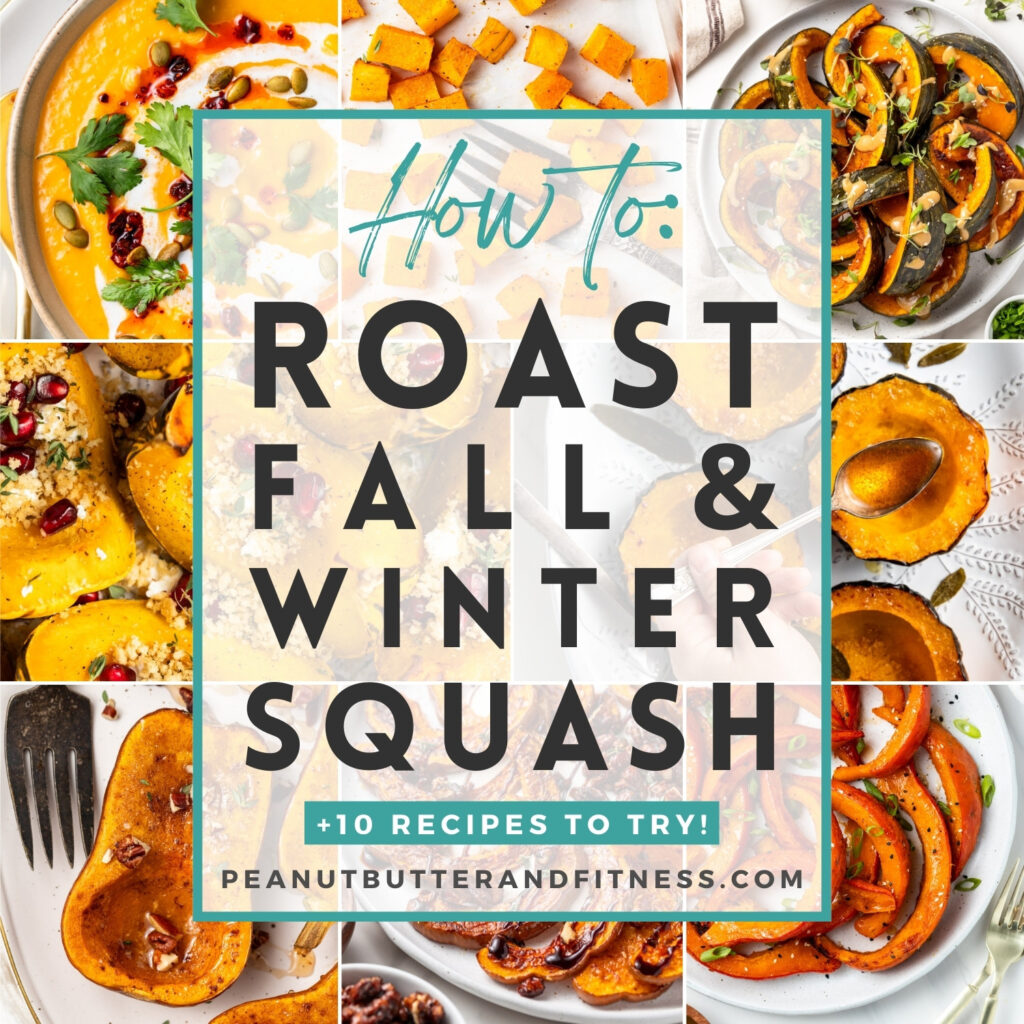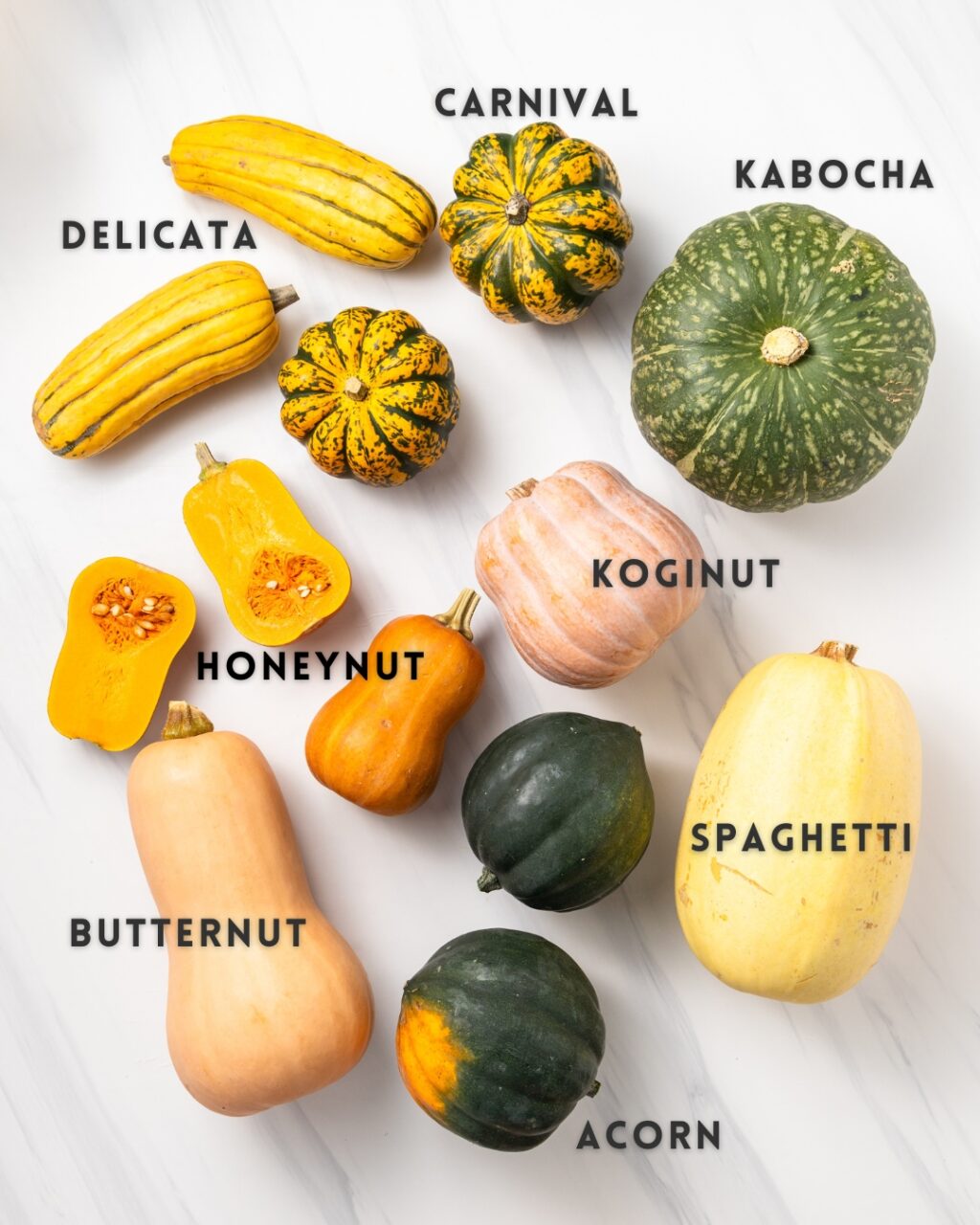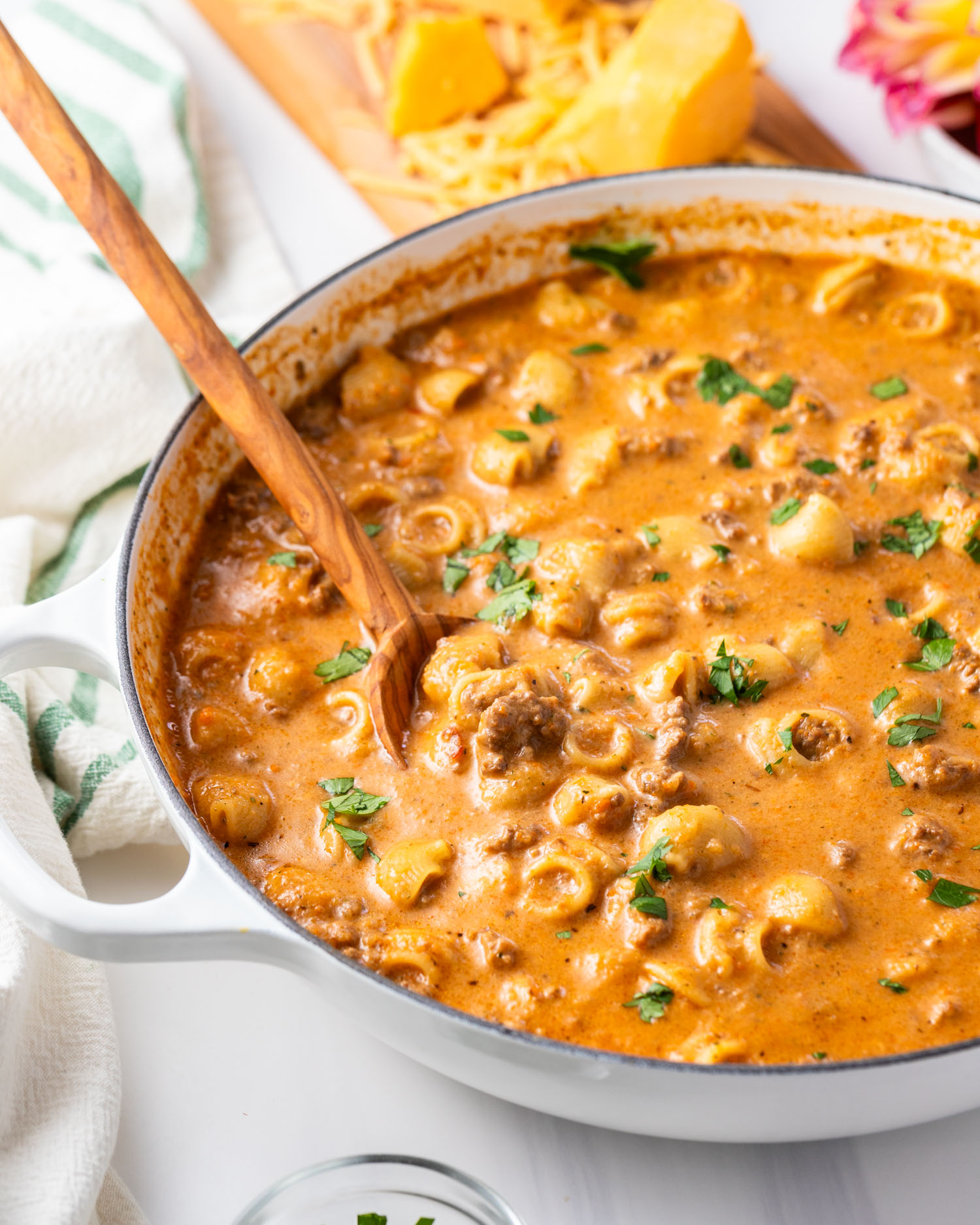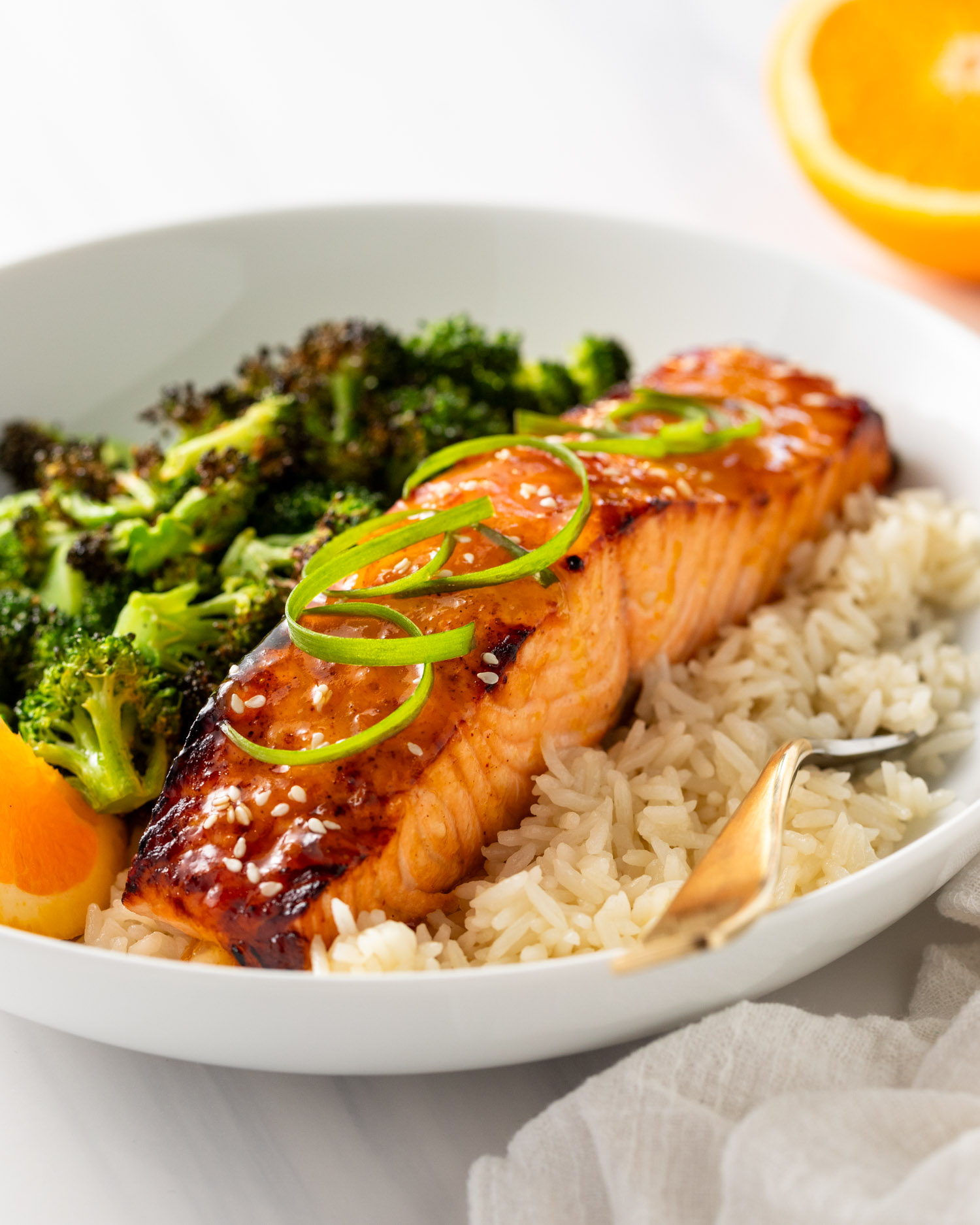
Can you believe I’ve been working on this post for over a year now?! I’ve been gathering all the squash varieties I could find, testing and re-testing recipes so I could stand here today and tell you all about How to Roast Fall & Winter Squash! Fall is my favorite season of the year and I can’t help but get excited when all the gourds (decorative and edible) show up at the stores and farmer’s markets. And ya know what those edible ones are begging for? To be roasted, of course!
Okay, so before we dive in, I just want to give a little caveat to the title of this post. Winter squash is a bit of a misnomer because in reality, all of these squash (squashes??) are naturally harvested in the late summer or fall, though farming tech and food production practices make many of them available year round. They’re often referred to as winter squash because many are hardy enough to last into or through the winter following the autumn harvest. So if you’re scrolling through the interwebs or social media, you may see them referred to as either fall or winter squash, or both. It’s all the same shit, er…squash. Yep, squash.







Tips for
Storing Squash
Squash varieties with a thicker skin like butternut squash tends to last longer than the thinner skin varieties. Fall and winter squash can last anywhere from a few weeks to several months. Here’s how to keep it fresh for as long as possible:
- Store in a cool, dark place. Kind of like potatoes, squash thrives in a cellar-like spot that’s cool, dry, dark, and well-ventilated. Temps should be about 50-55°F.
- Avoid stacking squash. Squash that’s stacked or touching will eventually bruise and begin to deteriorate.
- Don’t store it with ripening fruit. As they ripen, fruits (like apples, pears, and bananas) release ethylene gas, which will decrease the squash’s shelf life.





Squash Roasting Basics
Most squash are pretty forgiving when it comes to figuring out exact times and temps to roast it at. Each of the squash listed below has recommended time and temp listed, but here are some general guidelines for prepping and roasting any squash.
- If the skin of the squash isn’t edible, start by peeling the skin off.
- Cut the squash in half through the seed pocket.
- Scoop out the seeds.
- Slice, chop, or cut the squash into chunks, depending on how you’ll be serving it.
- Give the exposed flesh a rub down with olive oil and season with salt, pepper, and whatever other seasoning you like.
- Place the prepared squash on a baking sheet and roast between 350°F and 425°F for anywhere from 20-40 minutes.
Essential Tools for Roasting Squash

Squash Varieties & Recipes


Acorn Squash
roasted acorn squash with sage brown butter
Ripe acorn squash is firm with a dark green skin and feels heavy for its size. Some varieties will have a vibrant orange patch where the squash made contact with the ground when growing (that patch is yellow when the squash isn’t ripe yet). The flavor is nutty, with a hint of earthiness and a touch of sweetness. The skin is thin and edible.
When acorn squash is roasted, the natural sugars in the squash caramelize, enhancing its sweetness and bringing out a yummy, slightly nutty undertone. Some people liken the flavor of acorn squash to a combination of sweet potato and butternut squash, although it tends to have a milder taste than both.
- Roast halves at 375°F for 30 minutes.


Butternut Squash
I’m guessing that if you’re familiar with any of the squash on this list, this is the one! In the US, it’s usually available year-round. It’s bright orange and has a sweet, nutty flavor when roasted. The skin is not edible. Butternut squash can be used in sweet or savory applications and is great on its own as a side dish, or can even be blended up into smooth and creamy soup or pasta sauce.
- Roast 3/4″ chunks at 400°F for 30-35 minutes.


Carnival Squash
roasted carnival squash with herb toasted bread crumbs
This one is a type of sweet dumpling squash, and its taste can be described as a combination of nutty, sweet, and slightly earthy flavors. It’s great in both sweet or savory recipes and the skin is edible. The coloring looks a whole lot like a delicata squash, and it’s roasted similarly.
- Roast wedges at 400°F for 20-25 minutes.


Delicata Squash
roasted delicata squash with cheese
This is a squash that has become increasingly easy to find in recent years in the US, and it’s getting right up there with butternut squash in terms of popularity. Delicata requires very little prep – no peeling, just slice it lengthwise and all you have to do is a little seed scooping. The skin is delicate like the name suggests, so once it’s roasted you just eat it right along with the nutty, sweet yellow flesh.
- Roast slices at 425°F for 20-25 minutes.


Honeynut Squash
Although it looks a lot like a butternut squash, honeynut squash is much smaller and sweeter, with thinner skin that can be eaten. It has a flavor profile that combines elements of sweetness and nuttiness. This natural sweetness becomes more pronounced when the squash is cooked. The sweetness can be reminiscent of sweet potatoes or butternut squash, making it a great choice for both savory and sweet recipes. After roasting, the flesh becomes super tender and sort of self-caramelizes – much like a well roasted sweet potato.
- Roast halves at 425°F for 30-35 minutes.


Kabocha Squash
Roasted kabocha squash with sesame ginger dressing
Also called Japanese pumpkin, kabocha squash comes in red and green varieties. The red ones are sweeter than the green ones, but they all have a natural sweetness that is often compared to a combination of sweet potato and pumpkin. This inherent sweetness becomes more pronounced when the squash is cooked. Roasting it also develops a creamy and velvety texture. This smooth and dense flesh makes it ideal for purees, soups, and dishes where a rich, creamy consistency is desired. The skin is edible.
- Roast wedges at 400°F for 30 minutes.


Koginut Squash
Roasted Koginut Squash with Whipped Ricotta
Koginut squash (or Robin’s Koginut squash) is a really popular hybrid of kabocha and butternut squash. They turn from green to orange when ripe, making it easy to know when to pick them. They have a creamy and smooth texture when cooked, with a sweet buttery flavor. The skin is tender and edible, making it super easy to prep and cook.
- Roast slices at 425°F for 30-35 minutes.


Red Kuri Squash
miso maple glazed red kuri squash
Red kuri squash is unmistakable with its bright reddish-orange color and teardrop shape. It’s native to Japan and is also called Hokkaido pumpkin, named for the island where it was first grown in the 1920s. Kuri is the Japanese word for chestnut, which this squash is aptly called because it has a sweet, nutty flavor. The skin is thin and edible and the flesh is smooth and rich when roasted. It shines roasted up on its own or blended to make soups or pies.
- Roast wedges at 400°F for 35-40 minutes.


Spaghetti Squash
This squash has become famous for the flesh that turns into spaghetti-like strands when cooked. Unlike most other fall and winter squashes, spaghetti squash has a very mild nutty flavor and no natural sweetness. It’s a great low carb alternative in some pasta dishes, but be sure to use plenty of flavor in your sauce or other toppings since this squash doesn’t bring much of it’s own to the table.
- Roast halves at 400°F for 35-40 minutes.


Sugar Pumpkins
Also called pie pumpkins, these are the pumpkins that get roasted and scooped from their skin to fill cans of pumpkin puree. Not only are they great for baked goods like pies and muffins, you can also make some amazing soups and sauces with these pumpkins! If you’ve never roasted your own at home, it’s definitely worth trying.
- Roast halves at 400°F for 40-50 minutes.

















Leave a Reply